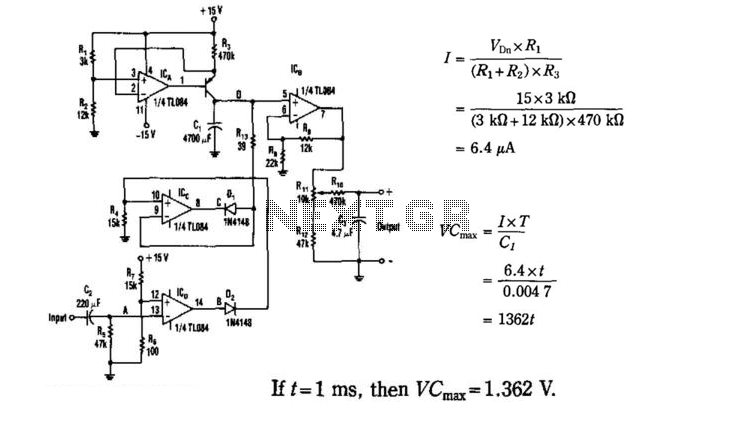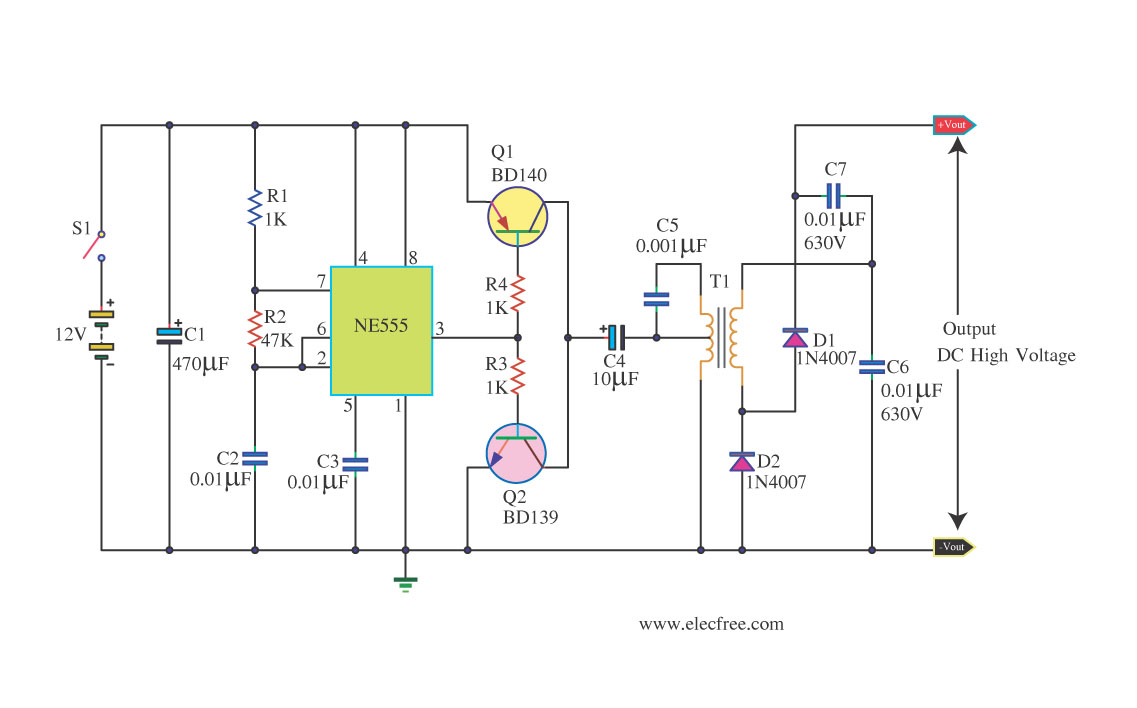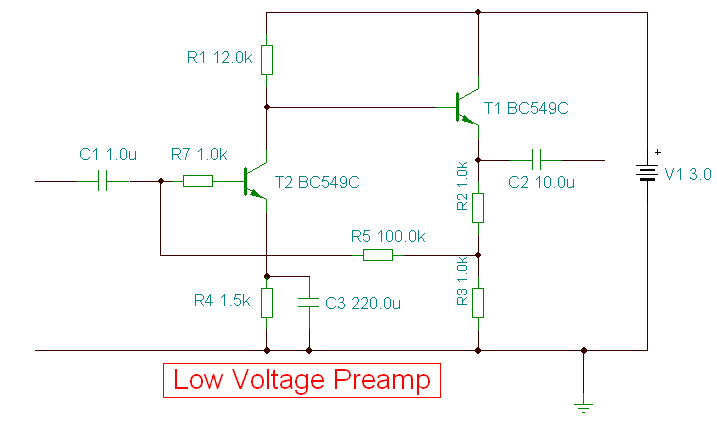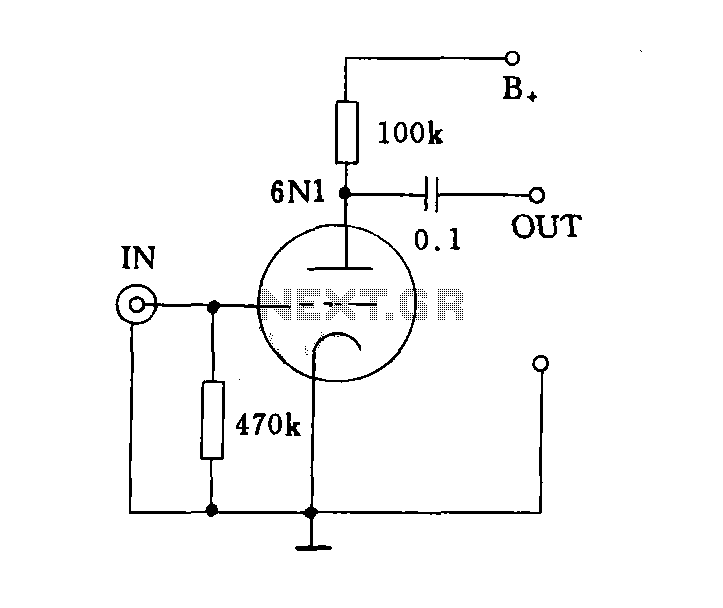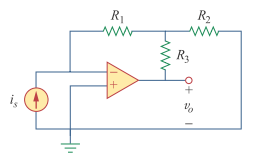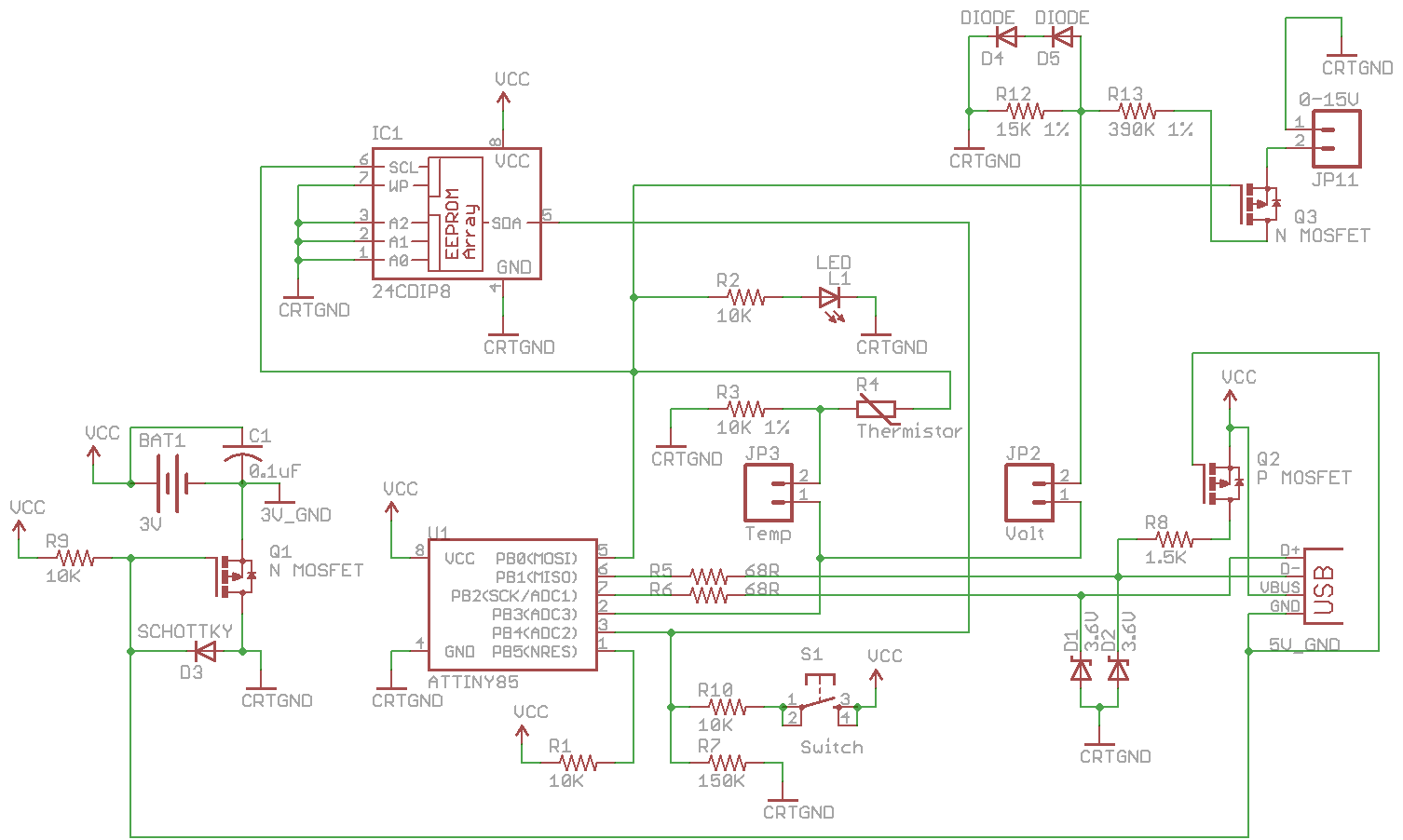
Voltage Inverter II
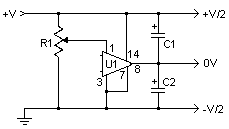
This simple and inexpensive circuit can produce a dual (positive and negative) voltage from a single supply input. It is therefore extremely useful for powering opamp and other circuits that require a dual voltage from a single battery. The circuit will operate at an input voltage from around 5V to 20V and produce an output from ±2.5V to ±10V. More: U1 dissipates around 1W and will therefore require a heatsink. R1 is used to equalize the outputs. The first time you use the circuit, it should be set to mid-range and then adjusted with the aid of a voltmeter. Measure each output while adjusting.
The described circuit functions as a dual voltage power supply, capable of converting a single input voltage into both positive and negative outputs. This is particularly beneficial for applications such as operational amplifiers (op-amps), which often require dual polarity power supplies for optimal performance.
The circuit operates effectively within a range of input voltages from approximately 5V to 20V. The output voltage can be adjusted to provide a dual output ranging from ±2.5V to ±10V, making it versatile for various electronic applications.
Central to the operation of this circuit is the component U1, which is likely a voltage regulator or an op-amp configured for dual output. It is important to note that U1 dissipates around 1W of power during operation, necessitating the use of a heatsink to prevent overheating and ensure reliable performance.
Resistor R1 plays a crucial role in balancing the output voltages. Initially, R1 should be set to a mid-range value. Following this, adjustments can be made while monitoring the output voltages with a voltmeter to achieve the desired voltage levels. This process ensures that both the positive and negative outputs are equalized, which is essential for the stability of the connected load.
In summary, this circuit is an efficient and practical solution for generating dual voltage from a single supply, with considerations for thermal management and output balancing being key to its successful implementation.This simple and inexpensive circuit can produce a dual (positive and negative) voltage from a single supply input. It is therefore extremely useful for powering opamp and other circuits that require a dual voltage from a single battery.
The circuit will operate at an input voltage from around 5V to 20V and produce a output from +-2.5V to +-10V. # U1 dissipates around 1W and will therefore require a heatsink. # R1 is used to equalize the outputs. The first time you use the circuit, it should be set to mid range and then adjusted with the aid of a voltmeter. Measure each output while adjusting. 🔗 External reference
The described circuit functions as a dual voltage power supply, capable of converting a single input voltage into both positive and negative outputs. This is particularly beneficial for applications such as operational amplifiers (op-amps), which often require dual polarity power supplies for optimal performance.
The circuit operates effectively within a range of input voltages from approximately 5V to 20V. The output voltage can be adjusted to provide a dual output ranging from ±2.5V to ±10V, making it versatile for various electronic applications.
Central to the operation of this circuit is the component U1, which is likely a voltage regulator or an op-amp configured for dual output. It is important to note that U1 dissipates around 1W of power during operation, necessitating the use of a heatsink to prevent overheating and ensure reliable performance.
Resistor R1 plays a crucial role in balancing the output voltages. Initially, R1 should be set to a mid-range value. Following this, adjustments can be made while monitoring the output voltages with a voltmeter to achieve the desired voltage levels. This process ensures that both the positive and negative outputs are equalized, which is essential for the stability of the connected load.
In summary, this circuit is an efficient and practical solution for generating dual voltage from a single supply, with considerations for thermal management and output balancing being key to its successful implementation.This simple and inexpensive circuit can produce a dual (positive and negative) voltage from a single supply input. It is therefore extremely useful for powering opamp and other circuits that require a dual voltage from a single battery.
The circuit will operate at an input voltage from around 5V to 20V and produce a output from +-2.5V to +-10V. # U1 dissipates around 1W and will therefore require a heatsink. # R1 is used to equalize the outputs. The first time you use the circuit, it should be set to mid range and then adjusted with the aid of a voltmeter. Measure each output while adjusting. 🔗 External reference
